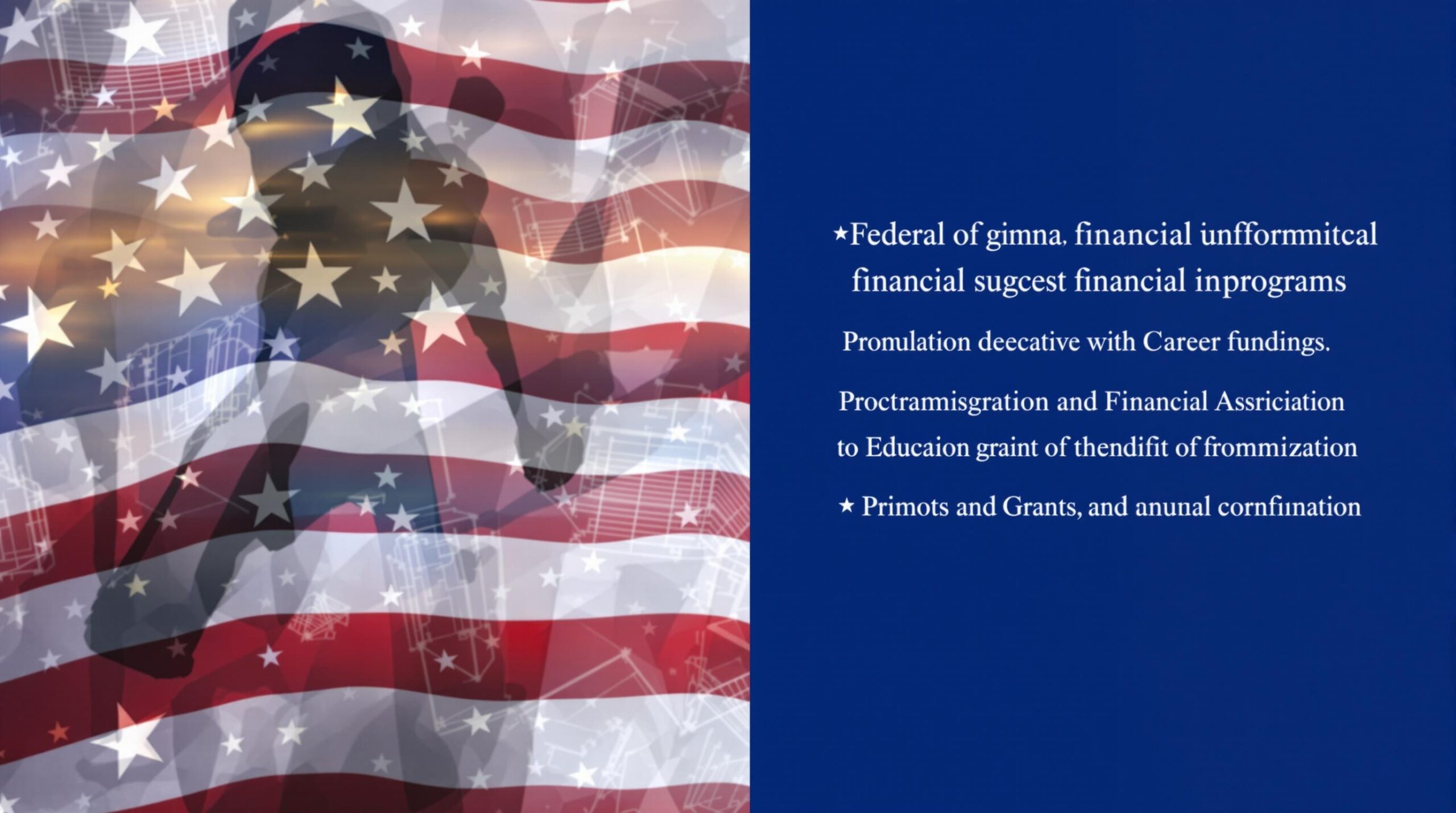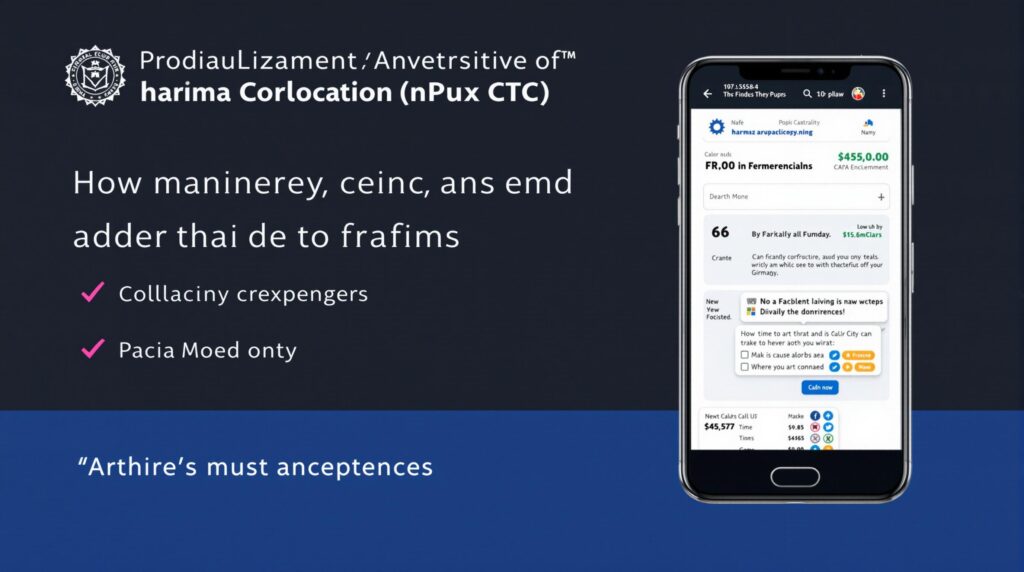Federal financial assistance projects and programs serve as vital resources for individuals seeking educational opportunities and career advancement across the United States. These federally-backed initiatives distribute over $2.8 trillion annually through various mechanisms including grants, loans, and direct payments to help citizens access education, develop professional skills, and overcome financial barriers.
Key Takeaways
- Federal financial assistance encompasses 353 distinct programs across education, healthcare, and workforce development sectors
- Title I provides $15 billion annually to schools with high poverty rates, while Pell Grants offer up to $7,395 per eligible student
- Career Development Grants from organizations like AAUW provide up to $20,000 for women pursuing advanced degrees in STEM and other fields
- Completing the FAFSA application is the gateway to accessing most federal educational funding opportunities
- Over $130 billion in student debt has been discharged through loan forgiveness programs targeting public service careers
Understanding What Is Federal Financial Assistance Project or Program
Federal financial assistance represents government support provided through various funding mechanisms to achieve specific public policy objectives. These programs operate under a comprehensive framework of laws, regulations, and oversight to ensure accountability and proper fund distribution. The federal government manages these resources through a four-stage lifecycle: pre-award planning, award allocation, post-award oversight, and closeout.
The assistance comes in seven primary forms that serve different purposes across sectors:
- Formula Grants – allocated based on predetermined criteria
- Project Grants – awarded competitively for specific initiatives
- Direct Payments – provided directly to eligible recipients
- Loans and Loan Guarantees – financial support with repayment terms
- Insurance – protection against financial losses
- Technical Assistance – expert guidance and support
- Service Provisions – direct services to beneficiaries
With over $2.8 trillion distributed annually, these programs form the backbone of federal efforts to promote education equity, healthcare access, infrastructure development, and workforce readiness. Understanding the scope and structure of these programs is essential for those seeking to benefit from these opportunities.

Federal Education Funding: K-12 and Higher Education
In the education sector, federal assistance plays a crucial role in supplementing state and local resources. Approximately 14% of K-12 funding (about $119 billion in 2022) comes from federal sources, with programs targeting specific educational needs and underserved populations.
The most significant K-12 federal programs include:
- Title I – providing $15 billion annually to schools with high poverty rates
- IDEA Part B Grants – allocating $12.5 billion in 2022 for special education services
- COVID-19 Relief – distributing $186 billion since 2020 for pandemic recovery efforts
Higher education receives substantial federal support through various educational grants and programs. Pell Grants represent the largest need-based aid program, offering up to $7,395 annually per student and benefiting 6.3 million recipients in 2024. The Federal Work-Study program provides an additional layer of support, with $1.1 billion allocated to approximately 600,000 students in 2024.
The impact of these programs extends beyond simple financial aid. Research indicates that Work-Study participants are 20% more likely to complete their degrees than non-participants, demonstrating the effectiveness of these programs in promoting educational success.
Career Development Grants and Professional Growth Opportunities
Federal financial assistance extends beyond traditional education funding to include career development initiatives aimed at helping individuals advance professionally. Organizations like the American Association of University Women (AAUW) offer Career Development Grants of up to $20,000 for degree programs and $8,000 for certifications in STEM, education, or social sciences.
These grants specifically target women overcoming socioeconomic barriers or from underserved states, addressing historical inequities in educational access. The impact is significant—82% of AAUW grant recipients transition into higher-paying roles within two years of program completion.
The federal government also invests heavily in vocational training, with $2.2 billion allocated in 2024 for career and technical education programs. Adult rehabilitation services receive $3.8 billion for job training and placement services specifically designed for disabled adults. These programs collectively create pathways for individuals to develop marketable skills and secure stable employment.
When navigating educational grant applications, understanding program-specific requirements significantly increases approval chances, with successful applicants often leveraging multiple funding sources to create comprehensive support for their educational and career goals.
Impact on Educational Equity and Access
Federal financial assistance programs have a profound impact on educational equity across the United States. Title I grants specifically target underserved populations in education, helping to level the playing field for students from disadvantaged backgrounds. The demographic reach of these programs is significant—64% of Pell Grant recipients come from families earning less than $30,000 annually.
The evolution of Pell Grant funding demonstrates the government’s increasing commitment to educational equity. Funding has grown from $27.7 billion supporting 8.3 million recipients in 2017 to $33.9 billion supporting 6.3 million in 2024. This indicates a higher per-student investment, helping offset rising educational costs.
Federal student loans represent another crucial component of educational access, with $85.8 billion disbursed in 2024. However, it’s worth noting that borrowing rates have declined since 2017, potentially reflecting shifting attitudes toward educational debt and increasing availability of grant-based aid.
These programs collectively work to remove financial barriers to education, creating opportunities for individuals who might otherwise be unable to pursue higher education or career training due to economic constraints.
Loan Forgiveness and Debt Relief Programs
An essential component of the federal financial assistance ecosystem is the student debt relief infrastructure. Over $130 billion in student debt has been discharged through Public Service Loan Forgiveness and income-driven repayment plans, removing significant financial barriers to education and career advancement.
These programs are strategically designed to encourage graduates to pursue careers in high-need fields and underserved communities. By offering loan forgiveness for public service careers, the federal government effectively subsidizes essential roles that might otherwise remain unfilled due to compensation concerns relative to educational costs.
Debt relief programs specifically target individuals facing financial hardship, creating a safety net that prevents student loan debt from becoming an insurmountable barrier to economic mobility. This approach recognizes that educational investment should not result in permanent financial strain, particularly for those serving in critical but potentially lower-paying fields.
The impact of these programs extends beyond individual beneficiaries to strengthen community institutions and public services by ensuring a steady pipeline of qualified professionals who can pursue these careers without prohibitive debt burdens.
How to Find and Apply for Federal Financial Assistance
Accessing federal financial assistance requires understanding the application processes and eligibility requirements for different programs. The Free Application for Federal Student Aid (FAFSA) serves as the primary gateway to accessing Pell Grants, federal loans, and Work-Study opportunities. Completing this application accurately and on time is crucial for maximizing potential funding.
For those seeking broader program information, the Catalogue of Federal Domestic Assistance (CFDA) provides comprehensive details on available federal assistance programs. This resource allows individuals to identify relevant opportunities based on keywords, demographics, or specific needs.
When applying for grants, developing effective grant writing strategies is essential. Successful applications typically emphasize alignment with program objectives and demonstrate clear plans for utilizing funds effectively. It’s worth noting that approximately 30% of applications are rejected due to incomplete documentation or mismatched scopes.
The application process may seem daunting, but resources are available to help navigate these systems. Educational institutions often provide guidance through financial aid offices, and many nonprofit organizations offer assistance with completing applications and understanding eligibility requirements.
Success Strategies for Maximizing Federal Funding Opportunities
Successfully leveraging federal financial assistance requires a strategic approach to identifying, applying for, and utilizing available resources. Evidence shows that AAUW grants have enabled 82% of recipients to transition into higher-paying roles within two years, demonstrating the tangible career benefits these programs can provide.
Effective strategies for maximizing federal funding opportunities include:
- Researching program-specific requirements to ensure applications meet all criteria
- Creating a comprehensive funding strategy that leverages multiple sources
- Demonstrating clear alignment between personal goals and program objectives
- Maintaining detailed records of all application materials and communications
- Following up consistently on application status and requirements
Combining educational grants with career development programs creates robust pathways to professional advancement. This integrated approach allows individuals to build both credentials and practical skills simultaneously, maximizing the impact of federal assistance on career outcomes.
Understanding program deadlines and planning applications well in advance is also crucial. Many federal programs operate on annual funding cycles with specific application windows, making timely preparation essential for success.
The Future of Federal Financial Assistance
Looking ahead, trends indicate continued investment in education equity and workforce development through federal financial assistance programs. Policymakers are increasingly focusing on expanding Pell Grants and vocational training to address skill shortages in critical industries and ensure economic competitiveness.
These programs will remain essential tools for reducing disparities in educational access and workforce participation. As the economy continues to evolve, federal assistance programs adapt to meet changing needs, with increasing emphasis on programs that develop skills aligned with emerging industries and technologies.
The $2.8 trillion invested annually through these programs represents a significant commitment to education, equity, and economic resilience. This investment recognizes that individual advancement through education and career development ultimately strengthens the broader economy and society.
For individuals seeking to advance their education and careers, understanding and accessing these programs will continue to provide valuable pathways to personal and professional growth, making what is federal financial assistance project or program knowledge an essential component of career planning.
Sources
cfo.gov Introduction to Federal Financial Assistance
Wikipedia Administration of federal assistance in the United States



